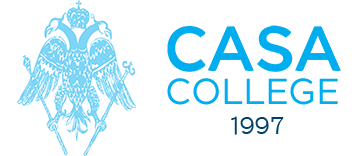European Credit Transfer System (ECTS)
What is an ECTS Credit?
ECTS credits represent the workload and defined learning outcomes of a given course or programme. Learning outcomes are statements of what the individual knows, understands and is able to do on completion of a learning process. Workload is an estimation of the time the individual typically needs to complete all learning activities such as lectures, seminars, projects, practical work, work placements and individual study required to achieve the defined learning outcomes in formal learning environments.
How are ECTS Credits Allocated?
Sixty (60) credits are the equivalent of a full year of study or work. In a standard academic year, 60 credits are broken down into two components carrying equally 30 credits. Credits awarded to students in one of our programmes may be transferred from our institution to be accumulated in another programme offered by our or another institution. Credit transfer is the key to successful study mobility. Our institution departments establish agreements which guarantee automatic recognition and transfer of credits.
In order to allocate credits to the different course units a validation is taking place on behalf of the lecturers as well as the students. Based on the validation and the needs of in-class and out-of-class hours we came to the result that for every 25 hours in-class and out-of-class, 1 ECTS credit will be awarded.
The Diploma Supplement – Importance & Necessity
The Diploma Supplement (DS) is the document which accompanies the higher education diploma and provides a standardised description of the nature, level, context, content and status of the studies completed by its holder. Our institution provides all students with such a Diploma at no charge. By doing this, the College has more transparent qualifications; continued national/institutional autonomy within a common framework accepted throughout Europe; informed judgements about qualifications that can be understood in other educational contexts; greater visibility of the institution abroad; enhanced employment prospects for our graduates, both at home and abroad and time savings – by answering many of the questions commonly asked by institutions about the content and portability of their qualification.



